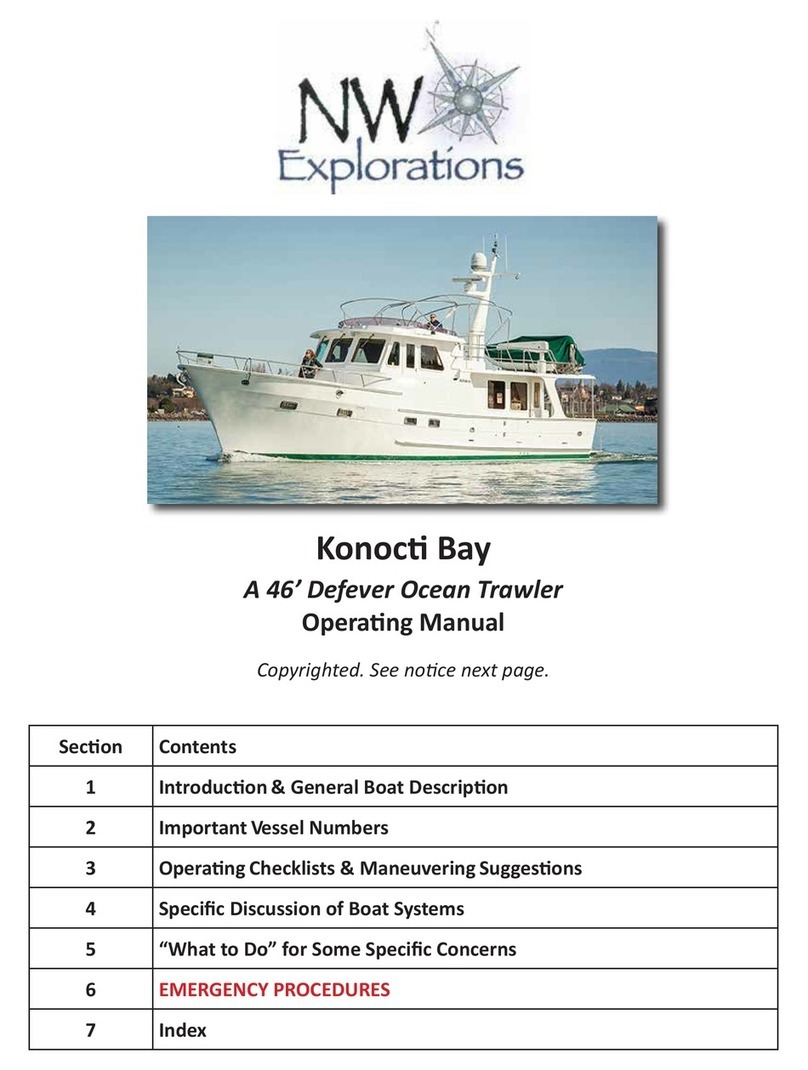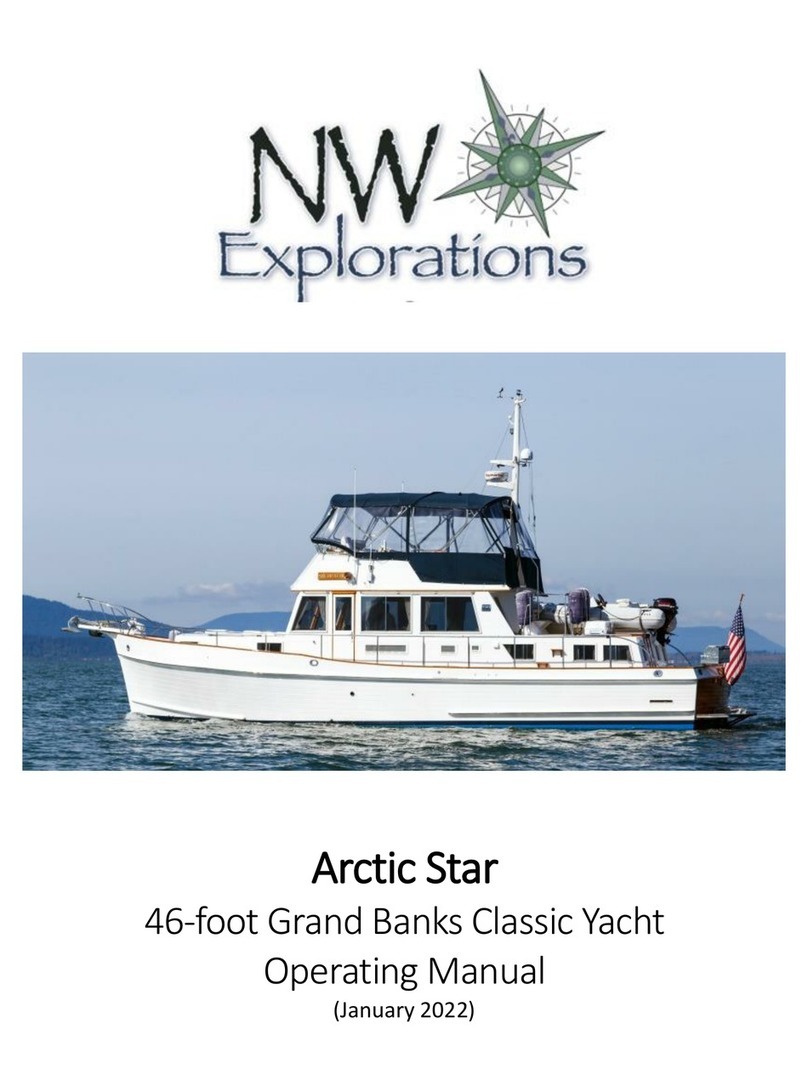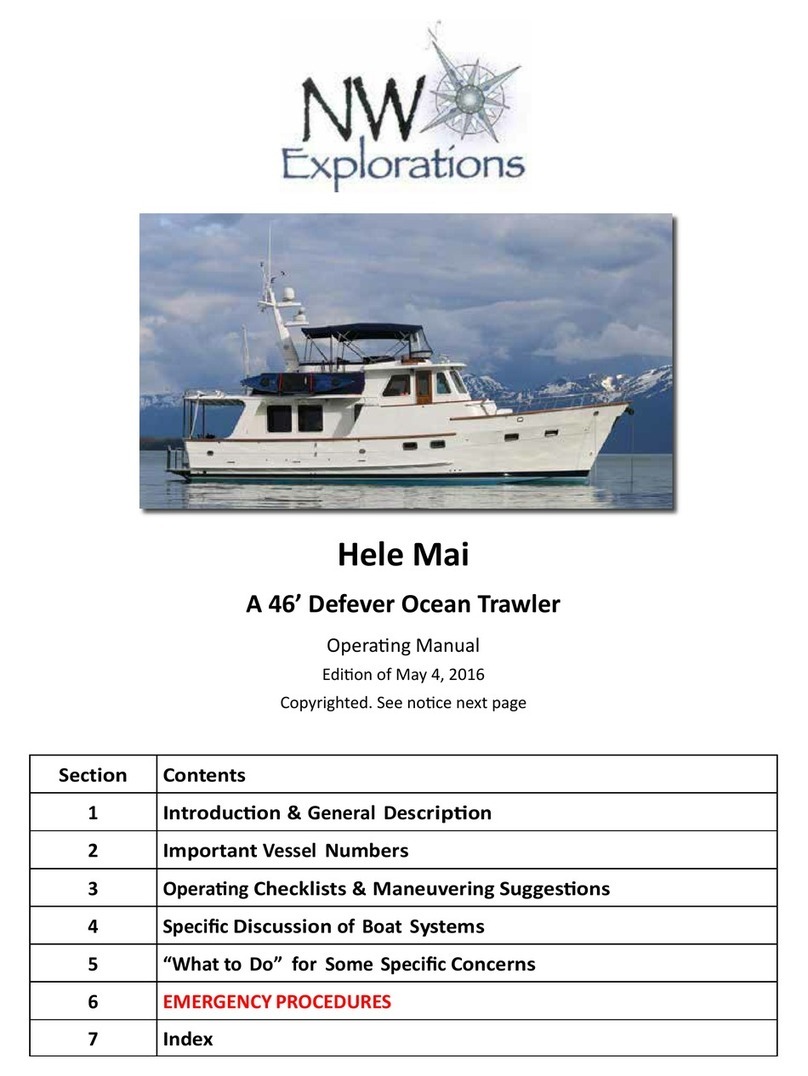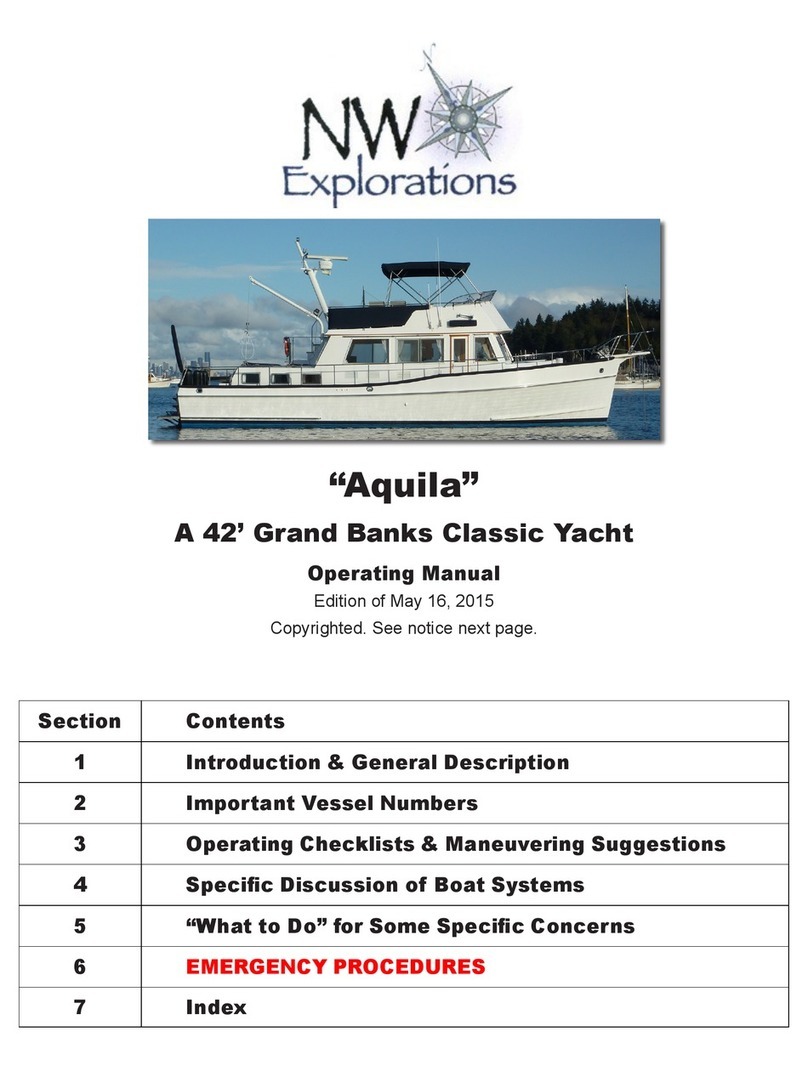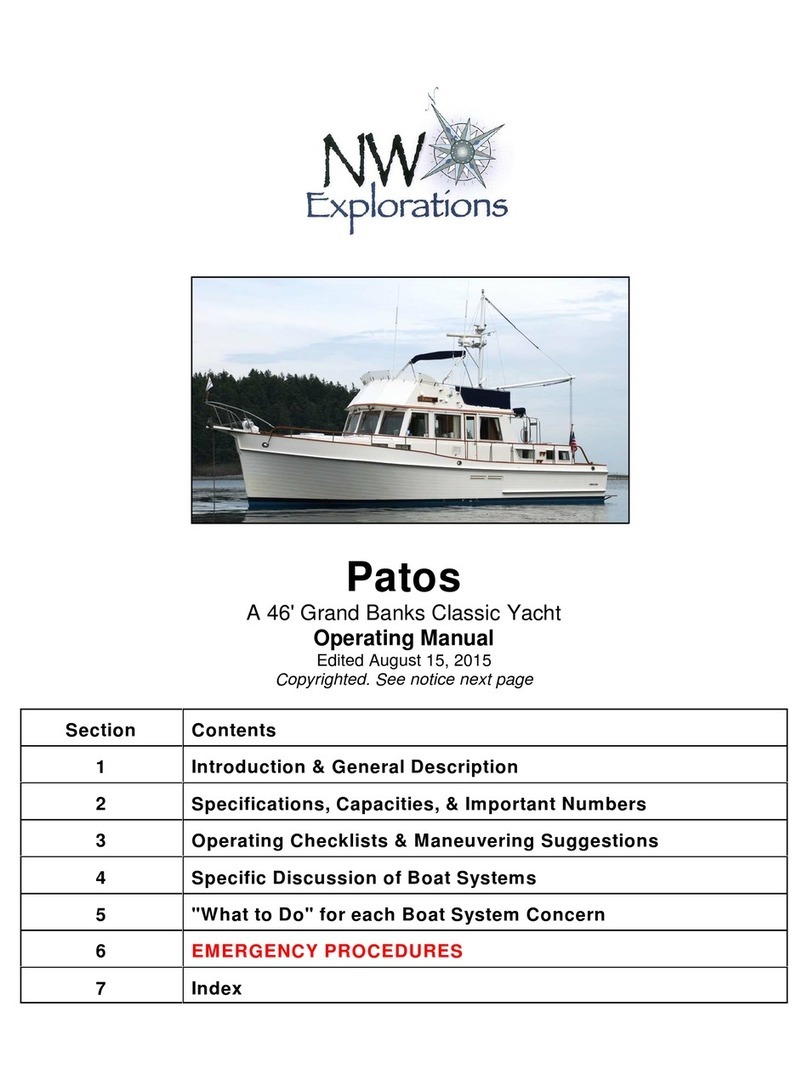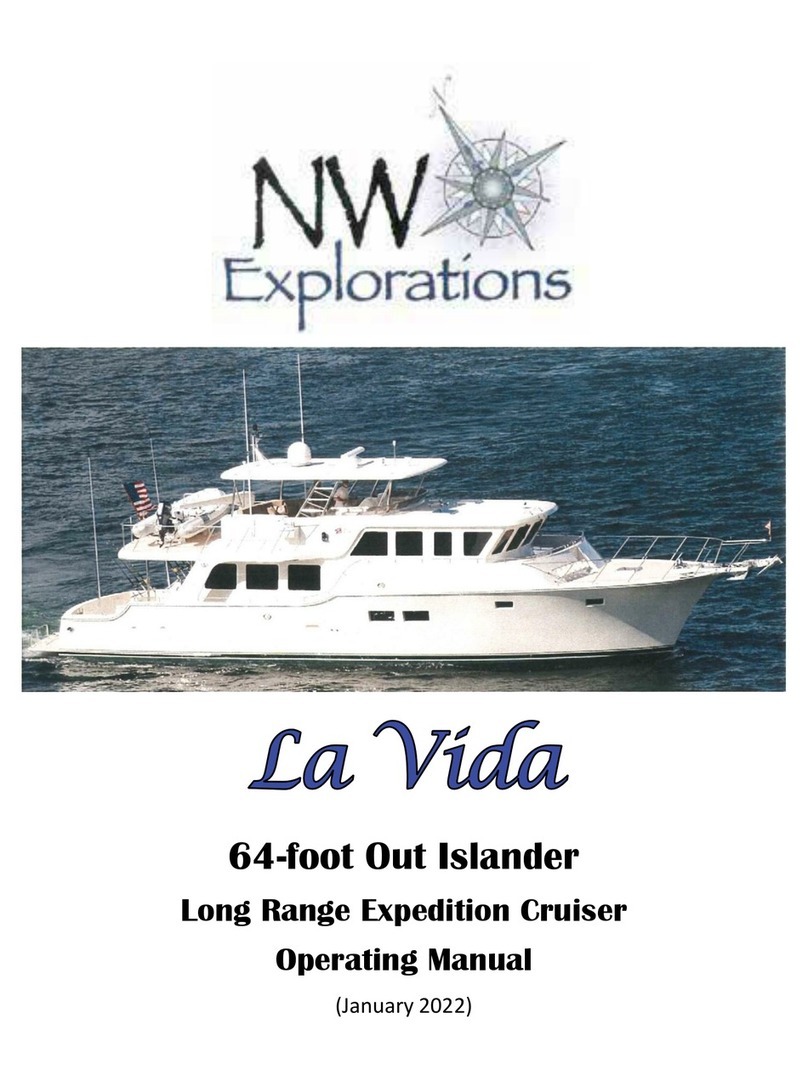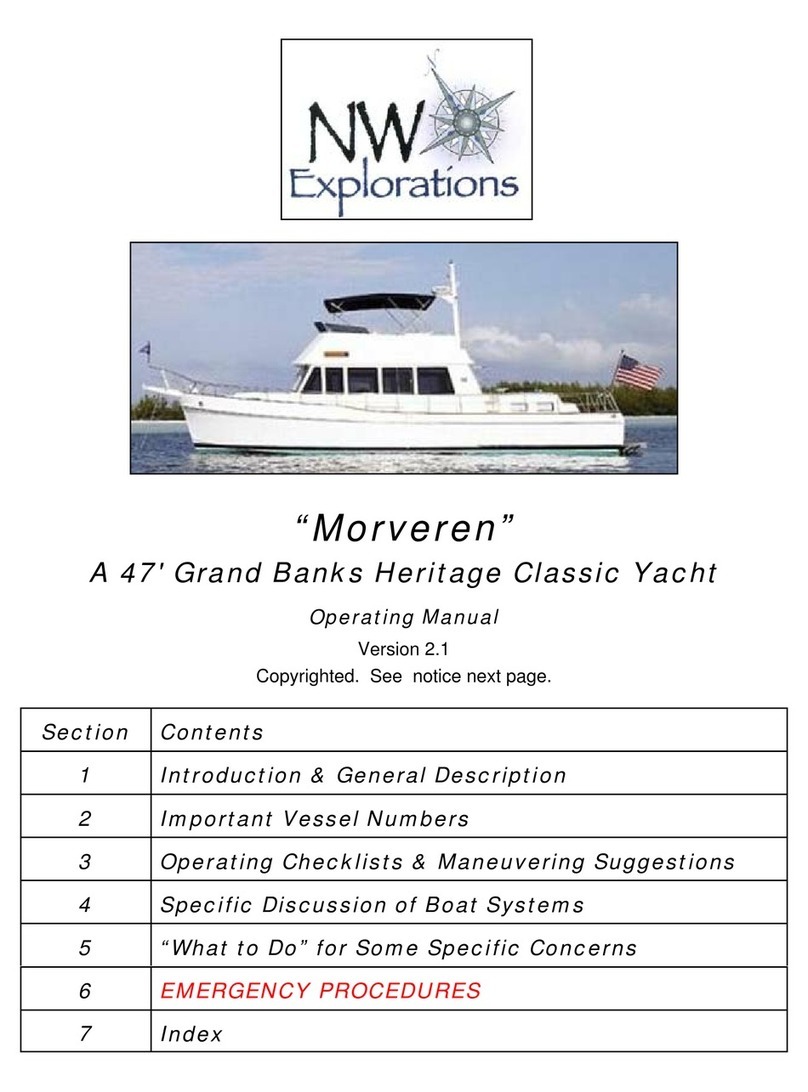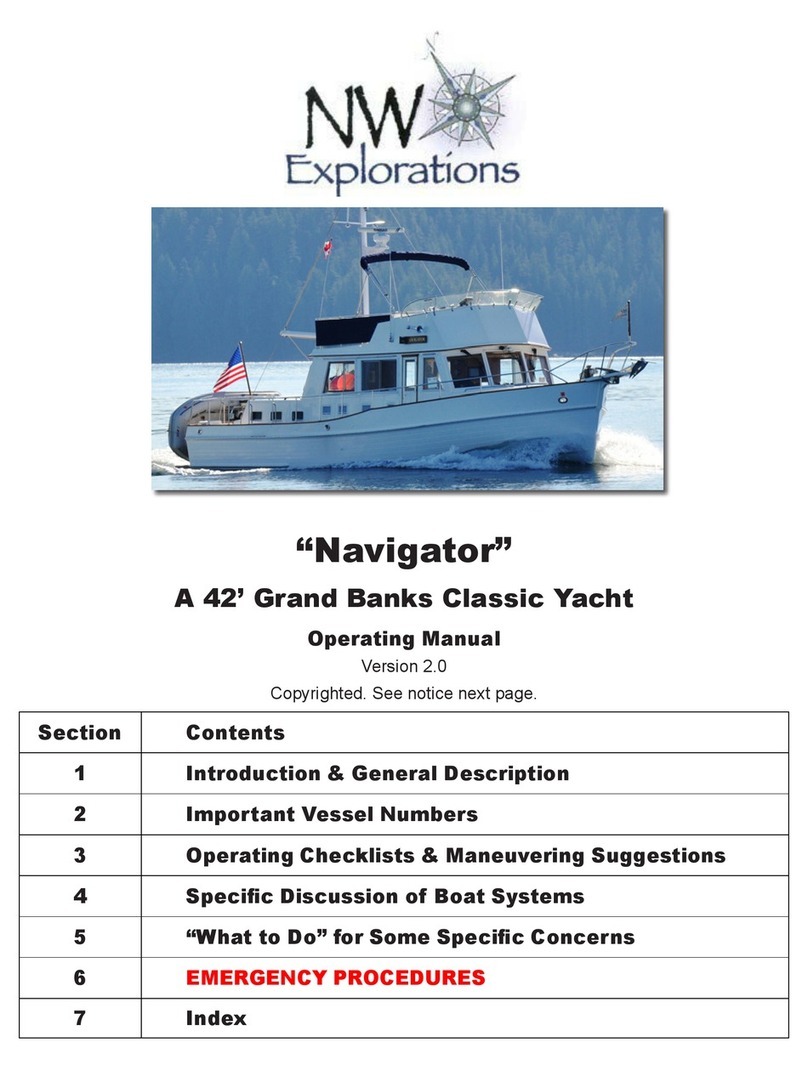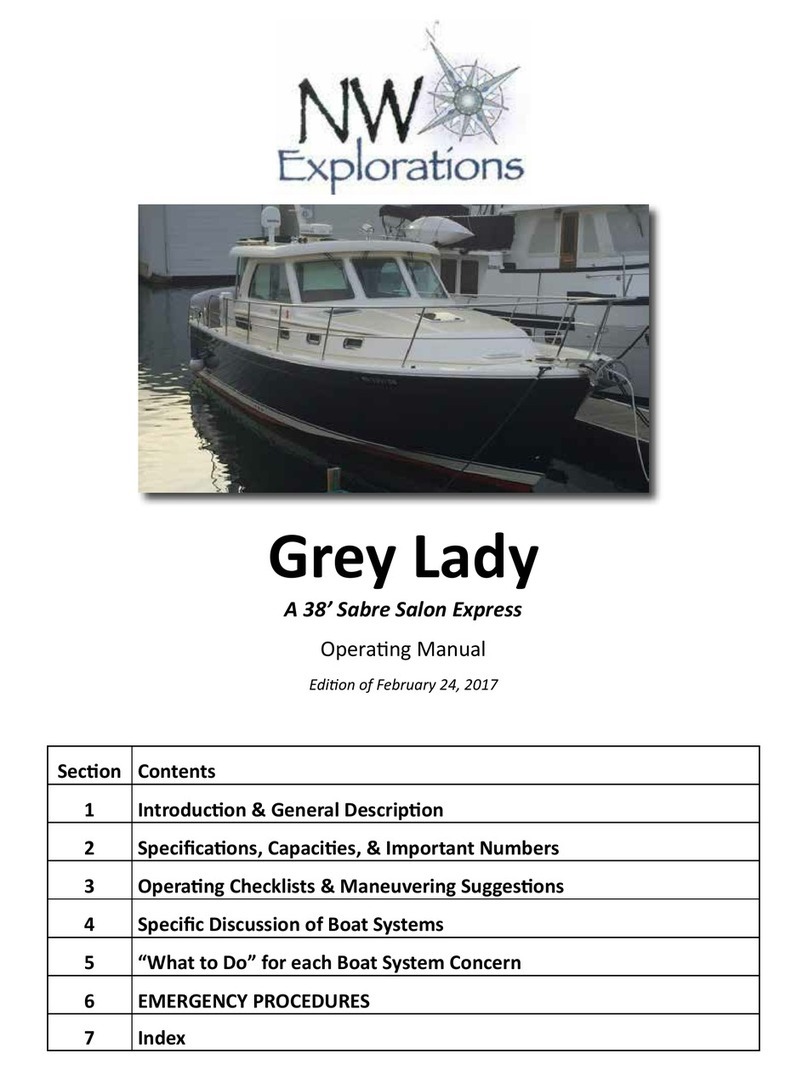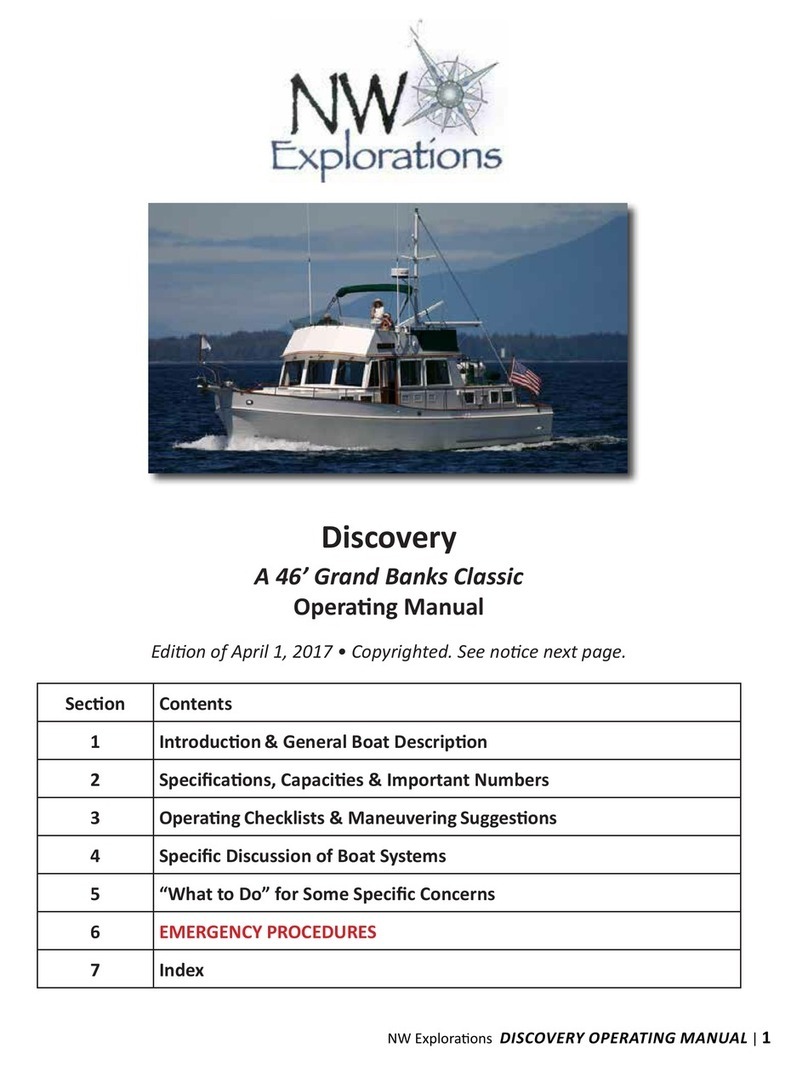
2| ANAMCARA OPERATING MANUAL NW Exploraons
W
arning!
This noce is a part of this manual, and is placed here to warn you as an owner, charter guest, crew member or
passenger on this vessel that the author of this manual assumes no responsibility for any errors or omissions.
He represents only that wrings and illustraons herein represent his “best eorts” to provide a comprehensive
overview of the vessel. So that it can be operated by a person who has the necessary experience and/or
training to operate such a vessel given the addional informaon herein. You should be aware that this
operang manual is provided as a convenience to the owner, charter guests, crew members and passengers on
this vessel. It is not complete in every detail. Given the complexity of this boat and its systems, there is no way
that all condions, conngencies, and operang details can be covered, both because of space limitaons and
because of ordinary oversight as conngencies are speculate upon by the author. Likewise, it is possible either
through oversight and/or changes in the vessel as a result of addions, modicaons or deleons to or of the
equipment since publicaon of this manual. Items discussed will operate dierently than described, be absent
from the vessel, or be added to the vessel without discussion in this volume. As a vessel owner, charter guest,
crew member or passenger on this vessel, you are here at your own risk, and the author of this manual has
no responsibility for your acons whatsoever. If you do not feel competent to undertake any or all operaons
detailed herein, do not undertake it/them; get help from a competent person.
Tim Hoving
These manuals were originally wrien for this boat’s owner and its charter company by Joseph D. Coons,
1220 Birch Falls Drive, Bellingham, WA 98229, tel (360) 647-0288. All rights reserved. This manual may
not be quoted, copied, or duplicated, in whole or in part, in printed or elec- tronic form, without express
wrien consent from the author or his assignee. All rights assigned to NW Exploraons LLC.
About the Original Author
Joe Coons is a rered AM-FM broadcasng staon owner and computer systems corporate execuve who
throughout his life was involved in communicaons and mechani-
cal, electrical, and electronic systems. He cruised his own boat on the Hudson River and Lake Champlain when
a teen and in his early twenes, and during the 70’s and 80’s accumulated some 2,500 hours as an instrument-
rated private pilot. Beginning in 1986 he became serious- ly involved in boang as a boat owner, subsequently
working in a “rerement career” as a bro- ker, also commissioning vessels, operang a charter eet, checking
out boat charterers, and training new power boaters. He has held a 50-ton Coast Guard Master’s license, and
operated his own boats and a substanal number of others from 26 to 70 feet in the near-coastal waters of
Washington State, Brish Columbia, and Alaska. His “helm me” exceeds 8,000 hours. In addion, he has
trained hundreds of boaters in the skills of vessel operaon.
